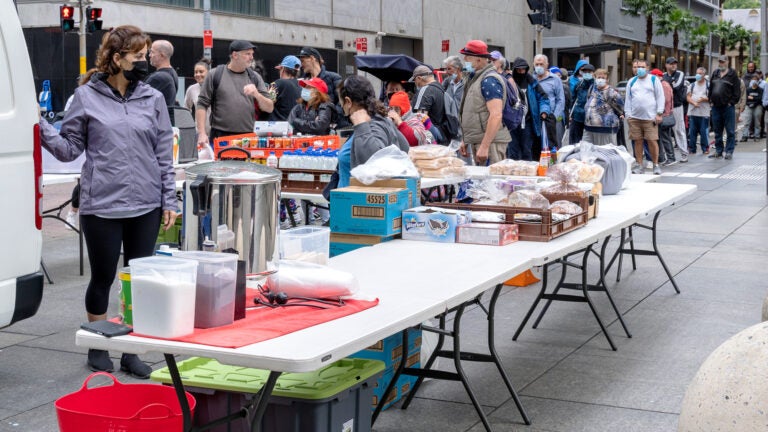
More than 1 million L.A. County households are food insecure as of July
Food insecurity rates continue to rise in Los Angeles County, reaching levels not seen since the onset of the COVID-19 pandemic in 2020.
A new study, spearheaded by Public Exchange at the USC Dornsife College of Letters, Arts and Sciences and based on survey data from the Understanding America Study, paints a dire picture.
A staggering 30% of county residents are grappling with food insecurity, marking a substantial 6 percentage-point increase from 2022, when the rate stood at 24%. This alarming trend has left more than a million households in the county struggling to put food on the table.
Notably, the data showed a surge in food insecurity among low-income residents, from 37% in 2022 to a high of 44% in July 2023. This figure mirrors the highest rate recorded during the COVID-19 pandemic in 2020.
At the pandemic’s outset, USC’s researchers documented a spike of 42% in food insecurity levels among low-income households. This rate dropped back to a pre-pandemic level of 28% in 2021, driven in part by substantial government assistance initiatives. These include a pandemic-era increase in allotment amounts for Supplemental Nutrition Assistance Program benefits, known as CalFresh in California and commonly referred to as food stamps.
These higher allotments expired this March, with the average household benefits in Los Angeles County dropping from $470 a month in December 2022 to $299 a month in July 2023. This study shows that the percentage of CalFresh benefit recipients who were food insecure increased 14% during this time, rising from 36% to 50%.
“This reduction in food stamp dollars directly coincides with a spike in food insecurity,” said lead researcher Kayla de la Haye, director of the Institute for Food System Equity at the USC Dornsife Center for Economic and Social Research. “At a time when food prices are high, the current CalFresh benefits are not enough to meet the food needs of many L.A. County residents, and this program is no longer combatting food insecurity as effectively as it once did.”
The study also underscores the persistent and substantial disparities in food insecurity rates among residents of the county’s Hispanic and Black communities. These rates stand at 38%, more than double the rate among white residents, which now stands at 16%.
Moreover, there has been a notable rise in the number of individuals turning to food pantries to meet their nutritional needs.
To address the escalating food insecurity crisis, de la Haye and her team recommend urgent measures, including expanding participation and benefit levels in government food assistance programs, supporting efforts to lower food prices, and providing stronger support for food banks and pantries to bridge immediate needs and address the gaps left unattended by other initiatives.